![Carolina Herrera Bad Boy Review: Does It Last Longer? [2024]](https://bestperfumes.reviews/wp-content/uploads/2021/10/CAROLINA-HERRERA-BAD-BOY-Review-150x150.jpeg)
How to Make Perfume from Flowers: A Step By Step Guide 2024
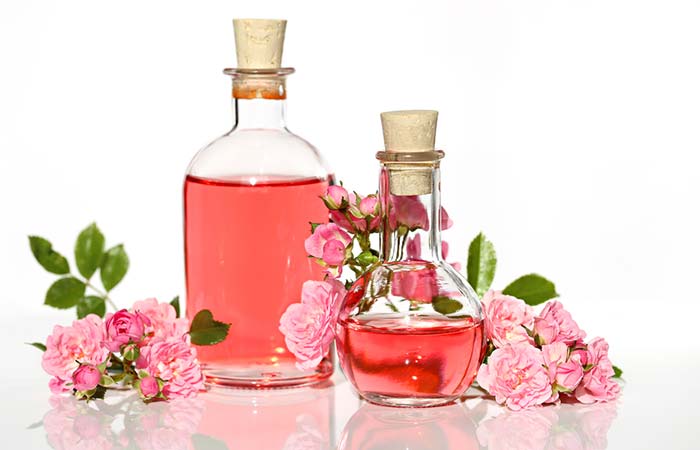
One thing many people never realised is that they can make the perfumes they will be using. They know about the Do It Yourself (DIY) ideology and, of course, have been doing a lot of things at home by themselves. But, they never envisaged they could make their own perfumes.
Well, today, you are going to find out how to make perfumes with the things you have in your house and what grows in your environment. Specifically, you are going to find out how to use those beautiful flowers in your garden to make a beautiful perfume that will keep you happy all day long.
Making perfumes from flowers has been in practice for a very long time now. It is a practice that is traced to Ancient Egypt and Mesopotamia, in the 4th century BC, where perfumers used flowers, oils, and calamus (a type of flowering plant) to make perfumes.
Today, many people make their perfumes by themselves, using flowers and other materials they can get from their homes. This tradition will not end because more people are learning the art and science of homemade perfumery and I know you will join the long list too. This tradition must be kept alive and passed on to the next generation.
There are a lot of people that don’t use perfumes because the materials used in making them are synthetic. It’s not everyone that can use things prepared in a laboratory on his skin. People like these usually opt for homemade natural perfumes, especially the ones made with flowers and natural oils. But in this guide, you will discover how to turn your garden into the producer of the raw materials you will be using for your home perfumery.
This guide is going to be easy for everyone that wants to learn natural perfume making. It will first list the most preferred flowers for homemade natural perfumes. After that, it will reveal different methods of making those perfumes. Note that all the things that will be suggested here for perfume making are natural and can be obtained from the kitchen and the garden. You don’t have to spend money to make this perfume.
How are Flowers Created?
Let us deviate a little bit and look at how flowers come into existence, their duties to nature, and why some of them smell so great. You need to know this part so you can bear it in mind when you pick the flowers you will use for the perfume-making project from your garden.
Flowers are not just there to beautify the world or to make the atmosphere smell good. Flowers house the reproductive systems of plants. If you look into a flower, you will find these tiny rounded ‘grains’ shooting out of a thin ‘stem’ that is attached to a ‘bud’. Now, those tiny grains are the pollen grains, which bear the male reproductive cells of the plant (amazing, isn’t it?). Inside that part of the flower that looks like a bud is what is known as the ovule (the ‘bud’ is known as the ovary).
If a pollen grain finds its way into a stigma (the funnel-like tip of the style) of any flower of its kind, it will pass through the style (the ‘stem’ inside the flower) and fertilise the ovule (just the way a spermatozoon fertilises an ovum). When this happens successfully, the fruit will be formed. And when fruits are formed, we don’t only have foods to eat, but also have seeds that will bring forth more plants. So, be mindful of how you take those flowers. Ensure that you pick only what you need.
How flowers are formed and why they have formed remain mysteries we don’t want to unravel for now. Even though we know some of the functions of flowers, we don’t know what happens that makes plants start forming them. All we know is that trees get this signal to stop making their usual leaves so they can make flowers.
Once this signal comes, all the trees of that kind (at least the ones in an area) will stop making new leaves and start producing flower buds. Another amazing thing here is that new leaves will never be produced until those flowers are done giving the world its freshness, sweet scents, beautiful sights, and fruits that will keep the world evergreen and nourished.
Now, over to why flowers smell good. Well, that’s another mystery we don’t need to break here. But, have you noticed it’s not all flowers that smell? Among those that have scents, some do smell awful. Who told the flowers to smell in a particular way is left for the scientists to unravel because our concern here isn’t that. Nevertheless, if you closely observe those scented flowers (even the ones with unpleasant scents), you will notice they have sticky pollen grains and broad brightly coloured leaves. Their nectars are tasty too.
All these features are ways the flowers attract their pollinators, such as butterflies, bees, flies, and humans (including you). So, don’t feel guilty when you see such flowers and feel the urge to pick them. It’s your natural response to nature. However, be careful so don’t destroy a lot of them as you prepare your homemade perfume. A little at a time is ok.
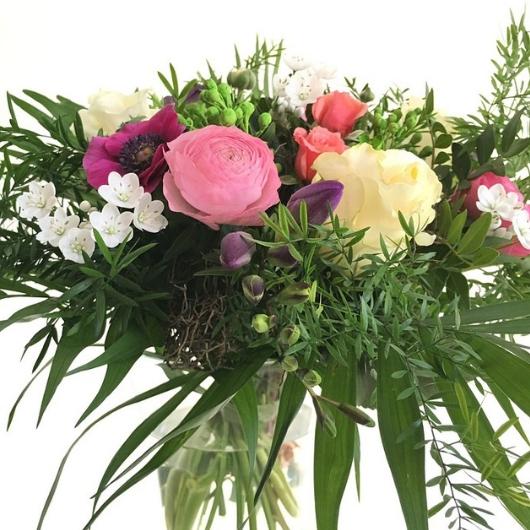
The Most Preferred Flowers for Perfumes
Of course, you have to use what is in your garden to make your natural homemade perfumes. But if you want to try other flowers or make use of different flowers, you can look for them in other places, so long as you are not trespassing. You can use that opportunity to obtain your signature perfume. Feel free to experiment with different flowers until you find what you want.
In case you want to know the flowers other adventurers prefer using for their homemade natural perfumes, here is the list:
1. Rose: This is the queen of flowers. Its scent is always refreshing, thereby giving it a note many people value. If you are going to use roses for your perfume, pick the flowers late in the evening so you can capture their sweet fragrance at its peak. After making the perfume, you will enjoy a perfume that has a sweet, minty, citrusy, and fruity scent with a touch of cloves.
2. Jasmine: This is also known as the king of flowers. It’s one of the most favourite flowers for making perfumes because it gives a sweet, animalic, and floral fragrance. Whether this is the flower you are opting for or one of the flowers you will use for the perfume, remember to pick them just before dawn and start processing them immediately. They can lose their fragrance quite easily.
3. Violet: This is a difficult one to use because its fragrance is elusive. The flower gives off a light powdery note that you may not pick. It shows and disappears almost immediately, but it is there all the same. So, you can get it if you want a sweet subtle scent. Remember to pick the flowers in the morning, because the sun affects the scent.
4. Plumeria: This is also known as Frangipani. They grow on trees. They smell their best in the night but can last long when harvested, so long as they were kept fresh with water. If used for making perfumes, the perfume will have a strong, sweet, tropical, exotic, sun-kissed, and heady scent.
5. Lavender: Lavender is one of the flowers loved by many people. When used in perfumes, lavender ensures that the perfumes have a sweet fragrance that will keep their users smiling all through the day.
6. Tuberose: This is another flower that will give your perfume a strong scent. Its fragrance will be metallic, earthy, and buttery. They are also most fragrant at night.
7. Ylang-Ylang: This yellowish flower grows on trees. Its perfume gives a blend of spicy, fruity, sweet, and heady scents.
8. Narcissus: Narcissus is a wildflower but its fragrance is unique. The perfumes made from them have a blend of spicy, green, heady, and animalic scents.
9. Gardenia: This beautiful white flower can give your perfume different notes, depending on when you harvested it. However, you should expect your perfume to have fruity, coconut, spicy, green, zesty, and fuzzy fragrances, if you use gardenia. The flower will make your perfume smell romantic all through the day.
10. Peony: If you opt for this, you will get a blend of citrus, sweet, and spicy fragrances. Some species of peony smell strong while others produce very subtle fragrances.
11. Lily: Not all lilies smell nice. At the same time, some smell so light while others have overwhelming scents. Most lilies have a blend of waxy, citrusy, spicy, and floral fragrances.
12. Freesia: The perfume you make from this flower will give you a sweet, green, citrusy, and tea fragrance.
13. Hyacinth: The fragrance from hyacinth will remind you of spring. Its perfume has green, floral, spicy, sweet, and aquatic main accords.
14. Lilac: The fragrance of this flower will give your perfume green, fresh, powdery, floral, and honey notes. It will also remind you of spring.
15. Lily of the Valley: If your perfume is made from this flower, you will receive light, floral, fresh, and sweet fragrance.
16. Heliotrope: If you use heliotrope to make your homemade perfume, it will have a powdery, vanilla, and almond smell.
17. Carnation: The perfume made from carnation juice will give you a sweet clove-like spicy floral scent.
18. Orange Blossom: This flower is obtained from orange trees. Their perfumes give an elegant fragrance that has fresh, smooth, clean, and sour-sweet scents.
19. Mimosa: Its fragrance gives off powdery, honey, warm, fruity, and floral notes.
20. Linden: This gives off a sweet, sunny, bright, and sharp fragrance, with a touch of grass, honeysuckle, and honey notes.
21. Lotus: This comes in different species that possess different fragrances. Generally, perfumes made from lotus have sweet, airy, fruity, aquatic, floral, and subtle scents.
22. Magnolia: The perfume from this flower has a fresh sweet floral scent that is almost like the one made from jasmine. But, unlike that of jasmine, the perfume from magnolia is light and also fruity.
23. Tiare Flower: This is also known as Tahitian Gardenia because it belongs to the family of gardenia. The perfume you make from this flower will give you a fragrance with floral, fresh, and green main accords.
24. Iris: If you use this beautiful flower for your homemade natural perfume, you will be rewarded with a subtle, powdery, floral, and buttery scent.
25. Honeysuckle: The perfume you make from honeysuckle has a warm, citrusy, honey, vanilla, and fruity scent.
26. Orchids: There are different species of orchids and the perfumes made from each of them have different scents. Some smell like a blend of cinnamon and vanilla, while others smell spicy, fruity, citrusy, and exotic. You will also find those that smell like honey, chocolate, and roses. The fragrance given by the flowers can tell you the scent the perfume will have. Remember to harvest them early in the morning or late in the evening to get the best of them.
ALSO READ: How To Make Perfume At Home: An Easy Step By Step Guide
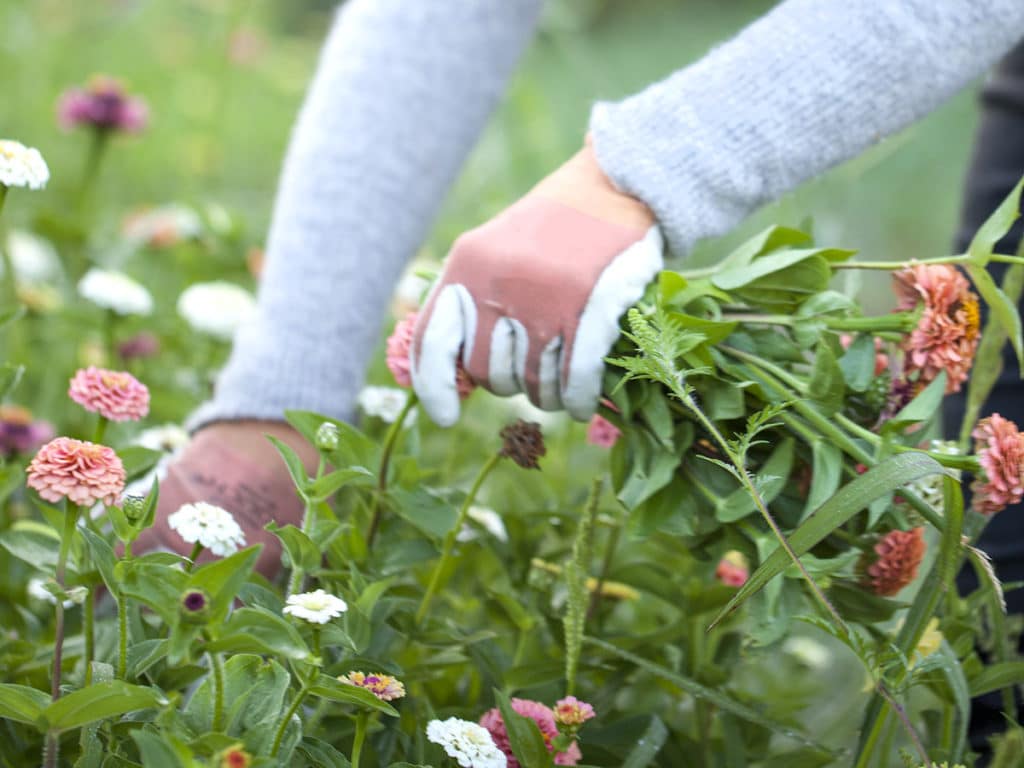
Tips for Harvesting Flowers for Perfumes
Here are some things you have to bear in mind as you harvest your flowers.
a. Flowers give their best fragrance when they are harvested before dawn or at night. Even if you can’t pick them within these periods, you should try and harvest them before the sun comes up.
b. The best time to start processing your perfume is immediately or shortly after you pick the flowers. Don’t keep them for a long time because they will shrivel or lose their scents. And, storing them in the refrigerator will not give you a good result. In fact, make your perfumes from freshly picked flowers.
c. Remember to pick only the amount you need at the moment. Remember, the reason for making the perfume is not to kill the flowers but to collect their essence. Even if you don’t want to propagate the plants, remember that other animals, especially insects, need to feed on the flowers. You will also come back to get more flowers because the shelf life of your perfume may not be as long as you thought.
d. If this is your first attempt at making homemade natural perfume, you should start with a little number of flowers. Don’t collect too much until you have learned how to make perfumes properly.
e. Use a container with a lid to hold the flowers as you harvest them. That will help to keep them safe from the weather and also keep their fragrance within.
f. Be mindful of thorns and spikes while picking flowers. You should also be on the lookout for poisonous insects and reptiles.
g. Be careful while plucking the flowers to avoid ripping off growing buds. Those buds are very important because you will need the flowers they will give.
Steps to Making Perfumes from Flowers
We are finally here. In this section, you are going to find out the different methods of transferring the scents of flowers to the bottles. You will find out how to use water, alcohol, and oil to extract fragrances from flowers to make perfumes. Remember, everything you are going to use will be obtained from your garden and kitchen. So, here we go.
Method 1: Use of Water Base (I)
This method is quite easy and less complex.
Materials
i. Your freshly picked flowers. One and a half cups will be enough for now.
ii. Two cups of water.
iii. A clean cheesecloth
iv. A dark glass jar or bottle with a lid
v. A small saucepan
vi. A bowl with a fitting lid
vii. A stove
Procedure
1. Make sure all the equipment to be used for making the perfume are ready and in place before picking the flowers.
2. Pick your flowers. Remember to handle them gently so you don’t crush them beforehand. It is assumed that you picked this flower in the evening when its fragrance is at its peak.
3. In the kitchen, or wherever you chose as your ‘laboratory’, gently remove the flower petals from their stems. Put them into the bowl as you remove them.
4. After disengaging the petals from their stems, pour water over them and gently wash them. This will remove dirt and dust from the petals. Remember not to squeeze the flowers as you do this. When you are done, throw the dirty water away and rinse the bowl.
5. Place the cheesecloth inside the bowl. Do this in such a way that the cloth lines the inside of the bowl while its edges drape outside the bowl.
6. Place the washed petals on the cheesecloth.
7. Pour water into the bowl until the petals are covered. Ensure the edges of the cheesecloth are still hanging outside the bowl.
8. Cover the bowl with its lead and keep it in a cool place. Then leave there so the flower can soak overnight. Note that the edges of the cheesecloth must continue to drape outside the bowl until the next step.
9. In the morning, remove the lid of the bowl gently to avoid the edges of the cheesecloth sliding into the bowl.
10. Bring the saucepan closer to the bowl.
11. Gather the edges of the cheesecloth so that you form a pouch with the petals and water in it. Gently lift the pouch and its content and move them over the saucepan.
12. Squeeze the cheesecloth over the saucepan until you have extracted all the fragranced water. Then discard the shrivelled petals.
13. Place the saucepan on a stove and simmer until the liquid has dried down to one tablespoon.
14. Turn off the heat and allow the saucepan and its content to cool down.
15. Pour the liquid (about 5ml of it) into the glass jar or bottle and cover tightly with its top. Your perfume is ready to be used.
NB.
a. The shelf life of this perfume is about one month. Don’t make more than you can use within a month so it doesn’t go bad.
b. You should store the content in a cool place, preferably a refrigerator. If you don’t store in a refrigerator, you may have to use it within ten days.
Method 2: Use of Water Base (II)
This is another easy perfume-making method. With this method, you can complete the process of making the perfume within two hours, max.
Materials
i. Your freshly harvested flowers.
ii. 2 cups of distilled water.
iii. A strainer
iv. A mortar and a pestle. You can go for the small one.
v. A bowl.
vi. A spoon.
vii. A glass jug
viii. A small dark bottle with a lid
ix. A cheesecloth
Procedure
1. Gather all the materials you will use for the perfume making.
2. Pick your flowers.
3. Remove the flower petals from their stems and put them into the bowl. Remember not to crush or squeeze them as you do this.
4. Pour water into the bowl to wash the petals. Note that the water you will use for this is not the distilled water. Remember not to squeeze the petals.
5. Drain out the water and put the petals into the mortar.
6. Using the pestle, crush the petals until they release their juice.
7. Scoop the content into the bowl and pour the distilled water over it.
8. Stir the mashed petal and the water until you are sure the juice of the petals have blended perfectly with the water.
9. Strain out the water into the glass jar. Use the cheesecloth for this.
10. Pour the content into the small dark bottle. Your perfume is ready to use.
NB:
a. This perfume, like the one in “Method 1”, also has a low shelf life. For that, store in the refrigerator and make the quantity you can finish within a short time.
b. You can repeat steps 6 to 8 until you are satisfied all the juices in the flowers have been extracted.
Method 3: Making a Water-Base Flower Perfume (III)
This method is another simple one too. It is also a quick one.
Materials
i. Your freshly picked flowers.
ii. Water
iii. Mortar and Pestle
iv. Two bowls (one for washing the flowers and mixing the perfume, and the other one for use in the microwave)
v. Microwave oven or stove.
vi. A strainer
vii. A spoon
viii. A glass jug
ix. A small dark bottle with a cap.
x. A saucepan, if you are going to use a stove.
xi. Cheesecloth
Procedure
1. Gather all the equipment and materials you will use together. You should always have all the things you need to make the perfume close so you don’t have to stop the process to get the materials.
2. Pick your flowers. Remember, it is better to use the flowers immediately after picking them from the garden.
3. Gently remove the petals from their stems and put them into the bowl for washing.
4. Pour water into the bowl to gently rinse off dirt and dust. Remember not to squeeze or crush the petals.
5. Transfer the washed petals to the mortar and mash them with the pestle until they have softened.
6. Transfer the pounded petals to the bowl suitable for the microwave or to the saucepan, depending on the source of heat you intend to use.
7. Pour water into the bowl or saucepan until the pounded petals are completely covered with water.
8. Place the bowl into the microwave and turn it on. If you are going to use the stove, place the saucepan on the stove and turn it on.
9. Check the saucepan/bowl every 30 minutes until you noticed all the colours on the petals have been extracted by the water.
10. Bring down the saucepan/bowl and allow it to cool.
11. Strain the mixture into a glass jug. Discard the crushed petals.
12. Transfer the liquid from the jug into the small dark bottles and close tightly. Your perfume is ready to use.
NB: The perfume produced through this process can go rancid because water and flowers are organic materials. Hence, you need to store it in a cool place too.
Method 4: Making an Alcohol-Based Flower Perfume
A lot of people opt for this method because it is easy and the perfume can last longer on the shelf. However, you have to make sure you use the right kind of alcohol for it.
Materials
i. Your freshly harvested flowers.
ii. Everclear alcohol or vodka. Everclear is the best option here, that is, if you have it, because it has no smell that will disrupt the natural scents of the flowers. But if it is unavailable, vodka is a good alternative. Never use rubbing alcohol to make your perfume.
iii. A small glass bowl or jar with a lid. Get the size that will fit the number of flowers you will use. Note that the flowers are the determinant of the size of the jar and not the quantity of perfume you want to make.
iv. A strainer.
v. A bowl without a lid
vi. A small dark bottle with a lid.
vi. A glass jug
vii. Colander
Procedure
- Gather all the equipment and materials you will use for making the perfume.
- Pick your flowers from your garden and remove the petals from the stems.
- Put the separated petals into the bowl without a lid and gently wash them with clean water.
- Transfer them to a colander so the water on them will drain out completely.
- Put the cleaned petals into the bowl with a lid or the jar.
- Add Everclear into the bowl or jar containing the washed petals. The alcohol should cover the petals very well.
- Cover the bowl or jar tightly and keep it in a cool place. Allow it to sit for 48 hours so the alcohol can extract the essential oils of the flowers.
- As 48 hours elapse, you will notice that the alcohol has changed its colour to that of the flower. This is the time to open the jar.
- Strain the contents of the jar into the jug.
- Transfer the liquid into the small dark bottle and cover it tightly. Your perfume is ready for use.
NB: This perfume doesn’t need refrigeration. But you have to make sure the bottle is always tightly closed and kept in a cool dark place (at least away from direct sunlight) so that the quality and quantity of the perfume do not reduce.
Method 5: Making an Oil-Based Flower Perfume
This method is preferred by people that want to rub perfume directly on their skins. It is also preferred because it lasts longer than the perfumes made with water, though it should be used within months, and not years. This method is as simple as the other methods but it is not as quick. However, you will enjoy every bit of it too.
Coconut oil, avocado oil, almond oil, apricot kernel oil, and jojoba oil are the best carrier oils for homemade perfumes. You can go for the light or cold-pressed ones. Some people love the scented oils because they want the fragrance in their perfumes, but it’s all a matter of choice. So, go for the one you prefer.
Materials
i. Your freshly picked flowers.
ii. The carrier oil.
iii. A bowl
iv. Water
v. Two oven pans
vi. Plastic food wrapper
vii. A colander
viii. A small dark bottle with a lid
ix. A strainer
x. A glass jug
Procedure
- Gather the materials you need before you kick off the process
- Pick the flowers from the garden. Remember it is always better to use them immediately after they were picked from the garden.
- Remove the petals of the flowers from their stems.
- Put the flowers into the bowl and pour water over it.
- Gently rinse out dirt and dust from the flowers.
- Transfer the flowers to the colander and allow the water on them to drain. Remember, you are doing an oil-based perfume and water isn’t one of its components. So, allow the water to drain out very well from the flowers before using them.
- Spread oil inside one of the oven pans. Spread about two layers of the oil so that it can soak up the flowers.
- Spread the flowers over the oil and press them in. Make sure they are soaked into the oil but not completely submerged.
- Using your fingers, press the flowers into the oil for about 5 minutes until they are marinated.
- Place the second oven tray on the flowers and oil such that the tray presses the flowers further down.
- Use the plastic food wrapper to seal the joined trays together. Make sure every part of the trays is well wrapped up.
- Keep the joined trays in a cool, dark, and dry place (away from direct sunlight) and leave for 48 hours. Within this period, the oil will extract the essential oils of the flowers, which include their scents.
- Unwrap the trays after 48 hours and pick out the petals, one after the other, from the oil. Be mindful not to scoop out the already scented oil as you remove the flowers. As a result, don’t scoop the petals together in one swoop. You have to take your time to pick them out one after the other.
- When you have removed all the petals, strain the oil into a glass jug.
- Pour the scented oil into the small bottle and cover it with the bottle top. Your perfume is ready to use.
ALSO READ: How to Make Perfumes Last Longer – An In-depth Guide
More Things to Bear in Mind
- You can use different flowers to make one perfume. You mustn’t use just a type of flower per perfume. Experiment with as much as you want.
- The longevity of these perfumes is moderate. Depending on your skin type, the perfume may last up to four or five hours. As a result, you have to continue retouching every four hours to stay fresh.
- You can add the essential oils you love to give the perfume an exotic blend of fragrances.
- Some people add alcohol to their water-based perfumes, especially if they added essential oils to them. The reason for doing this is to make the oil blend very well with the water. In this case, shake the bottle very well each time you want to use the perfume.
- If you notice your skin is reacting to the perfume, you should consider spraying the perfume on your clothes. If what you made is an oil-based flower perfume, you should, first of all, test it on a portion of your skin to be sure you won’t react to it. If you do, discontinue use. But, to avoid this, go for the oil you are sure you don’t react to. If the reaction continues, you will be sure you are reacting to the flowers. In that case, you should discontinue using the perfume.
- It is preferable to use a dark bottle to store your perfume so as to prevent it from the light. But, if you don’t have one, use what you have. Nevertheless, store your perfume in a cool dry place, away from direct sunlight.
- You don’t have to buy flowers from florist shops to make your perfumes. Use what you can collect from your garden or that of your friends if they will allow that. Remember to prepare the perfume immediately after harvesting the flowers.
ALSO READ: How To Choose A Good Perfume – A Detailed Guide
Conclusion
As you can see, making your perfumes is simple. And it’s cheap too. There are so many exotic perfume-making methods out there, some of them quite complex. You can explore more and discover some of them. See this as an adventure and enjoy every bit of the fun.


![Chanel No. 5 Review: Does It Smell Good And Last Longer? [2024]](https://bestperfumes.reviews/wp-content/uploads/2021/10/Chanel-No-5-Review-440x264.jpeg)
![Dolce and Gabbana Velvet Rose Review: Is it a Quality Perfume? [2024]](https://bestperfumes.reviews/wp-content/uploads/2021/03/Dolce-and-Gabbana-Velvet-Rose-150x150.png)
![Dolce and Gabbana Velvet Pure Review: Does it Smell Good? [2024]](https://bestperfumes.reviews/wp-content/uploads/2021/03/Dolce-and-Gabbana-Velvet-Pure-Review.png)


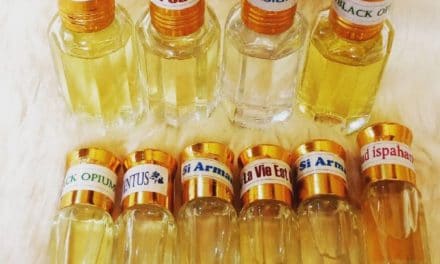
![How to Make Perfume with Essential Oils: A Complete Step By Step Guide [2024]](https://bestperfumes.reviews/wp-content/uploads/2021/11/How-to-Make-Perfume-With-Essential-Oils.jpeg)
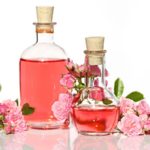
![Why Perfumes Fades So Quickly On the Body [2024]](https://bestperfumes.reviews/wp-content/uploads/2021/01/Why-Perfumes-Fades-So-Quickly-150x150.png)
![The Ingredients For Making Perfume of High Quality [2024]](https://bestperfumes.reviews/wp-content/uploads/2021/01/Ingredients-For-Making-Perfumes.jpg-150x150.png)